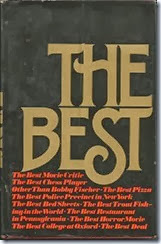(1965-72)
Members: Jesse Colin Young (vocals, guitar, bass), Banana (guitar and electric piano), Joe Bauer (drums), Jerry Corbitt (guitar)
”One hit wonder” is a cruel term, covering novelty acts (Napoleon XIV), groups outside the top 40 mainstream (The Grateful Dead), bands who put out an excellent single but couldn’t follow up (John Fred and His Playboy Band), and terrible groups who got one lucky break (Steam). The Youngbloods are technical a one-hit wonder, but the hit didn’t really define their sound, and who produced excellent music without hitting the single charts.
The group was led by Jesse Colin Young (birth name: Perry Miller). He grew up in New York and began playing folk music in Greenwich Village coffeehouses. Young was noticed, and released two solo albums. After the second, he started working with guitarist Jerry Corbitt, billed as Jesse Colin Young and the Youngbloods. The two settled in southern California and took up two new members, Banana (real name: Lowell Levinger) and Joe Bauer. The group followed in the footsteps of The Lovin’ Spoonful, and released their most famous song off The Youngbloods, their first album: “Get Together,”* a paean to peace and love.
It flopped.
The album did have some critical acclaim, however, and a second album, Earth Music, was released. It didn’t even chart, though, again, it was a critical success.
At this point, Corbitt left. The group looked like any one of a thousand critically acclaimed acts that just couldn’t find success.
But the Youngbloods kept going. The group carried on as a trio, with Banana’s electric piano becoming more of a lead instrument. Then, in 1969, they got a break.
The great New York City DJ, Dan Ingram, was putting together a public service announcement promoting brotherhood and chose “Get Together” as the background music. WABC was the top-rated station in New York at the time, and people noticed the song, including the National Council of Christians and Jews, which used it as the theme for their TV ads. The two-year-old song reached #5 and is still a mainstay on classic rock station.
At the same time, they released the masterpiece Elephant Mountain.
The album starts out with a bang: the apocalyptical “Darkness, Darkness.”
After this beginning the album switches gears many times, to the pop breakup song (“Smug”), to jazzy improvisations (“On Sir Francis Drake”), to love songs (“Sunlight”), folk/music hall hybrids (“Rain Song”), and much else. The group, which had previously did a lot of cover versions, wrote all the music themselves.** It was a truly wonderful album.
It sold poorly, coming up just short of the top 100. Of course, their big hit wasn’t on the album, and it may have been too eclectic to be massively popular.
The group also did something unheard of: they walked off the Tonight Show. They had been asked to perform “Get Together,” but were reluctant to perform something they had recorded two years before. They agreed to do it if they could also perform “Darkness, Darkness.” Johnny Carson agreed, but when the show ran long and they were told to only perform their hit, they left.
Instead of coming out with a strong followup, the group’s next release was Rock Festival, a live album of all original material that was a big disappointment, though it was the only one of their albums to crack the hot 100.
Realizing their mistake, their next album*** was also live – but Ride the Wind took some of their better studio songs on stage, and gave casual fans a live version of “Get Together.”
Good and Dusty had them doing more cover songs, mostly blues covers, but it really didn’t please anyone.
High on a Ridge Top was also all cover songs, but to better effect. It was an eclectic mix – Dylan, the Beatles (“She Came in Through the Bathroom Window” is a real delight), Taj Mahal, plus several 50s hits. Not a great album, but an enjoyable one.
At that point, Young decided to go solo.**** While he never had a hit, he recorded and performed regularly into the 21st century. He reformed the Youngbloods in the 80s for a tour or two, but has been content to keep performing solo.***** Corbitt also had a solo career.
The Youngbloods were never a major act, but at their best – especially in Elephant Mountain – they made a claim that they deserved to be.
_______________________________________
*Written by Dino Valenti of Quicksilver Messenger Service.
**Except “Rain Song,” which had been cowritten by Jerry Corbitt.
***After a “Best of” album
****Perhaps the reason the group was doing so many covers in their last two albums was that Young was saving his own songs for his solo career.
*****And sell his own brand of coffee.
 (1958-1960?)
(1958-1960?)





















 Broadway flops in the 40s. Her marriage to Kerr meant she would make the rounds of Broadway parties, where she gained a reputation for being one of the theater crowd’s funniest people. After contributing sketches to a couple of successful revues, her first full-length success came in 1954 with King of Hearts. By this time, and she had begun writing humorous essays on life in the suburbs for various magazines. In 1957, these were gathered together into a single book: Please Don’t Eat the Daisies.
Broadway flops in the 40s. Her marriage to Kerr meant she would make the rounds of Broadway parties, where she gained a reputation for being one of the theater crowd’s funniest people. After contributing sketches to a couple of successful revues, her first full-length success came in 1954 with King of Hearts. By this time, and she had begun writing humorous essays on life in the suburbs for various magazines. In 1957, these were gathered together into a single book: Please Don’t Eat the Daisies.  (2009-10)
(2009-10)








